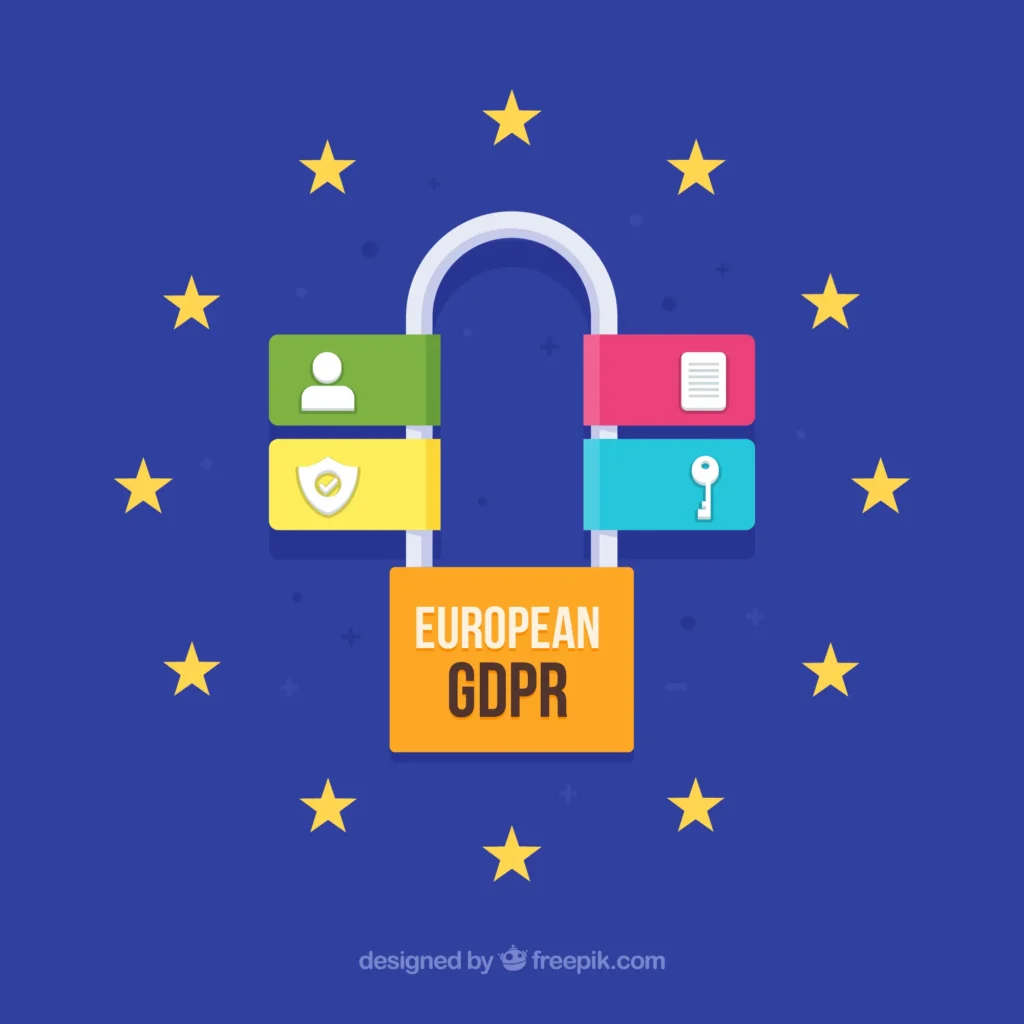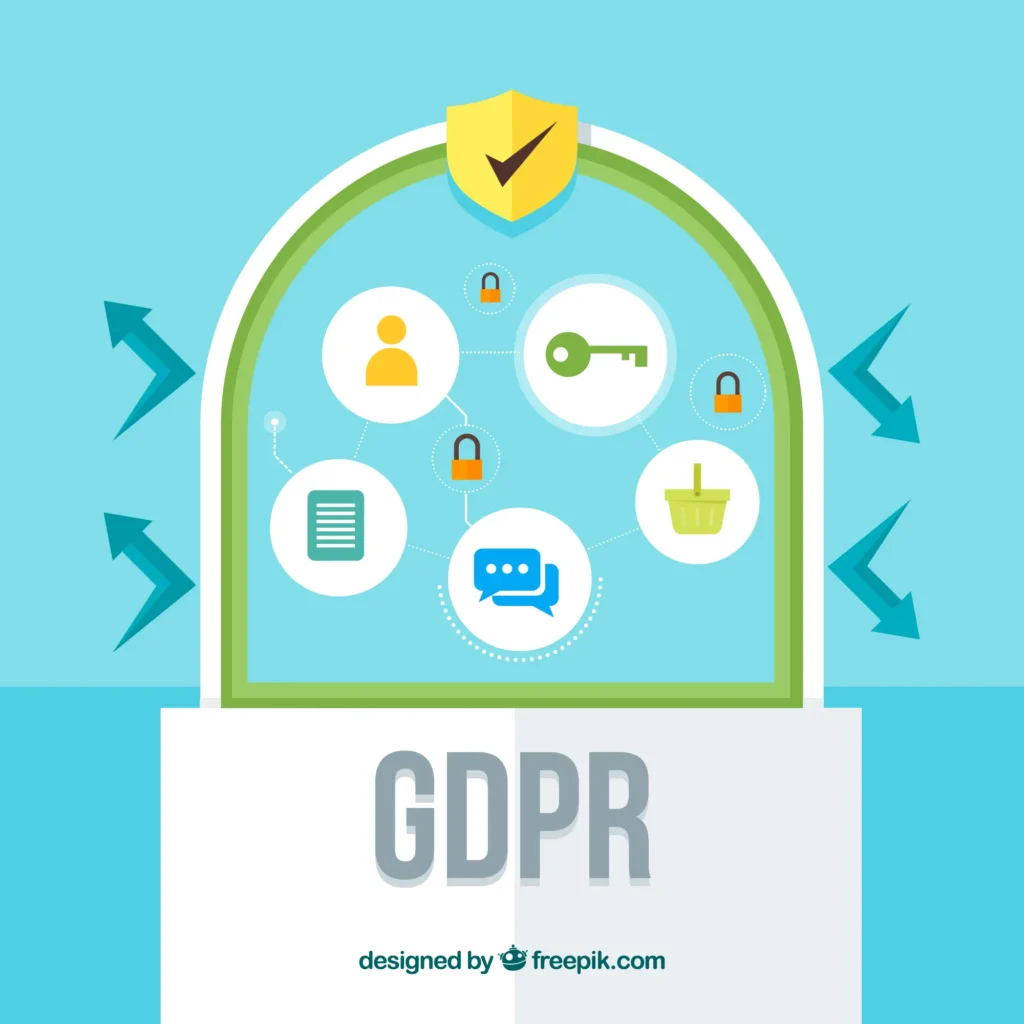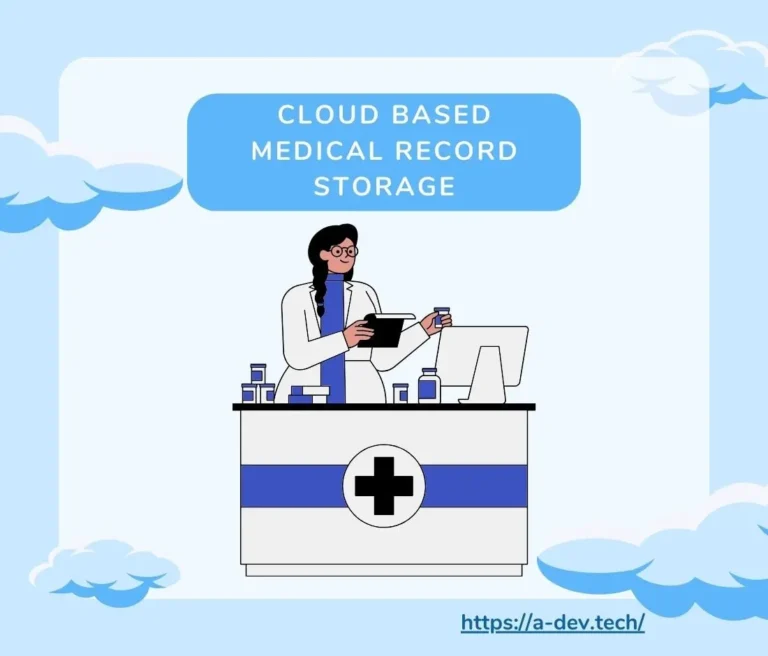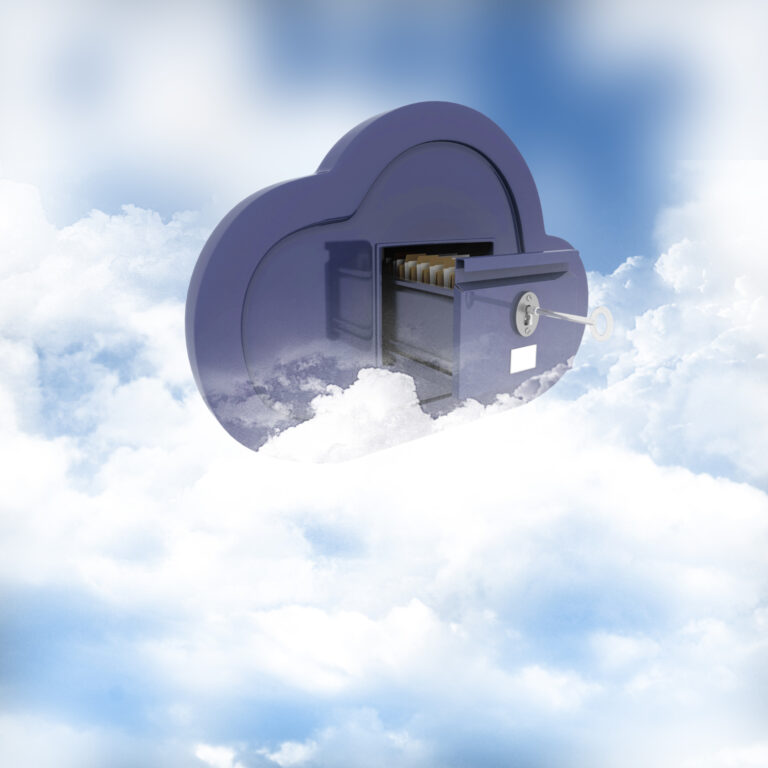In today’s digital age, cloud computing has become an indispensable tool for businesses seeking efficient and scalable data storage solutions. However, for companies operating within the European Union (EU), leveraging the cloud’s vast potential comes intertwined with a critical responsibility – ensuring compliance with the General Data Protection Regulation (GDPR). This regulation acts as a cornerstone of EU data privacy law, dictating how organizations handle the personal data of EU residents. The GDPR mandates robust data security measures and transparency from businesses, placing the onus on organizations to safeguard sensitive information and empower individuals with control over their personal data. This comprehensive guide delves into navigating GDPR compliance in the cloud environment. We’ll explore key considerations, actionable steps, and best practices to equip your organization with the knowledge and tools necessary to effectively protect personal data and adhere to EU data privacy regulations. By following this roadmap, you can confidently harness the power of cloud storage while prioritizing the privacy rights of EU citizens.
Understanding GDPR and Cloud Computing

Source: Freepik
The General Data Protection Regulation (GDPR): A Cornerstone of EU Data Protection
The General Data Protection Regulation (GDPR) is a cornerstone of EU data privacy law. It governs how organizations protect personal data of individuals within the European Union (EU) and the European Economic Area (EEA). The GDPR empowers data subjects with control over their personal data and dictates how organizations process and store this data. This includes the principle of data minimization, requiring organizations to only collect and process the personal data necessary for specific purposes.
Here’s a breakdown of key GDPR concepts:
- Personal Data: Any information relating to an identifiable natural person (data subject), such as names, emails, addresses, or location data.
- Data Processing: Any operation performed on personal data, including collection, storage, transmission, or deletion. This encompasses various processing activities outlined by the GDPR.
- Data Subject: The individual whose personal data is being processed.
- Data Controller: The organization that determines the purposes and means of processing personal data.
- Data Processor: An entity that processes personal data on behalf of a data controller. Cloud providers typically act as data processors when you store your data with them.
The GDPR empowers individuals (data subjects) with control over their personal information. This includes the right to access, rectify (correct), erase (be forgotten), and restrict the processing of their data. Organizations are obligated to respect these rights and demonstrate they handle data responsibly. Non-compliance with GDPR can lead to hefty fines for businesses.
Additional GDPR Considerations:
- Sensitive Information: The GDPR offers additional protections for certain categories of personal data deemed more sensitive, such as health information or religious beliefs.
- Data Transfers: The GDPR restricts the transfer of personal data outside the EU unless certain conditions are met, such as the existence of an adequacy decision by the European Commission or the use of appropriate safeguards. Organizations transferring data to third countries need to carefully consider these restrictions.
- Supervisory Authorities: Each EU member state has a designated supervisory authority responsible for enforcing the GDPR. Individuals can lodge complaints with these authorities if they believe their data privacy rights have been violated.
Understanding these concepts is crucial for organizations that handle personal data of EU residents, and plays a vital role in using cloud services for data storage in a GDPR-compliant manner.
Cloud Computing and Data Storage: Scalability, Cost-Effectiveness, and Security Considerations

Source: Freepik
Cloud computing offers a way to store and access data and programs over the internet through cloud services provided by cloud providers (CSPs). These services can be in the form of cloud applications, accessible through a web browser, or public cloud services offering virtual storage space and computing resources.
The benefits of cloud computing for data storage include:
- Scalability: Cloud storage offered by providers with global infrastructure allows you to easily scale storage capacity up or down based on your needs. This eliminates the need to invest in additional physical hardware.
- Cost-Effectiveness: Compared to maintaining on-premise infrastructure, cloud services can be more cost-effective. You typically pay for the storage you use, eliminating upfront hardware costs and ongoing maintenance expenses.
However, leveraging cloud computing for storing personal data introduces new considerations regarding data security and GDPR compliance. Here’s why:
- Data Security: Your data resides on the servers of a third-party vendor, the cloud provider. It’s crucial to choose a provider with robust cloud security measures like ciphering and access controls (including granular access controls) to safeguard your data.
- Data Residency and Transfers: With global infrastructure, cloud providers may store your data across different geographical locations. Understanding data residency (where your data is physically stored) and data transfers (how your data moves between locations) is important for GDPR compliance. The GDPR restricts the transfer of personal data outside the EU unless certain conditions are met.
- Cloud Privacy: Ensure your chosen cloud provider offers clear and transparent cloud privacy practices. This includes understanding how they handle user data and whether they offer features to help you comply with data subject rights mandated by GDPR (e.g., access, rectification, erasure).
Understanding these considerations and choosing a GDPR-compliant cloud provider is essential for ensuring your cloud-based data storage adheres to EU data privacy regulations. We’ll explore these aspects further in the following sections.
Safeguarding Your Data: Protect Personal Data in the Cloud
Challenges and Considerations for GDPR Compliance in the Cloud

Source: Freepik
Leveraging cloud computing for data storage offers significant benefits, but it also introduces challenges regarding GDPR compliance. Here, we’ll explore some key considerations:
Shared Responsibility Model:
The cloud environment operates under a shared responsibility model. This means:
- Cloud providers are responsible for securing their underlying infrastructure, including data centers and networks. They typically implement robust security measures to safeguard their infrastructure, often adhering to industry standards like PCI DSS.
- Businesses (data controllers) are responsible for securing their data stored in the cloud. This includes implementing appropriate security controls and ciphering to protect your data at rest and in transit.
Choosing a GDPR-Compliant Cloud Provider:
- GDPR Compliance Features and Documentation: Choose a provider offering features and clear documentation specifically addressing GDPR requirements. This might include data access controls, ciphering capabilities, and mechanisms to assist with data subject rights fulfillment.
- Data Residency and Location Controls: Understand where your data will be stored (data residency) and how the provider handles data transfers. Look for providers offering location controls that align with your GDPR compliance strategy. Consider whether the provider has received an adequacy decision from the European Commission for data transfers to specific countries, or if they offer alternative mechanisms like Standard Contractual Clauses (SCCs).
Additional Considerations for GDPR Compliance:
- Demonstrate Compliance: Organizations need to be able to demonstrate their compliance with GDPR regulations. This may involve maintaining audit logs (like those generated by AWS CloudTrail) and having processes in place to respond to data breaches or data loss incidents.
- Cost-Effective Access: While security is paramount, ensure the chosen cloud provider offers cost-effective access controls and encoding solutions that meet your specific needs.
- Compliance Requirements: Carefully assess the specific compliance requirements that apply to your organization based on where your data subjects reside and the nature of your data processing activities.
Understanding these considerations is essential for navigating the challenges and opportunities of GDPR adherence in the cloud. By choosing a reputable cloud service provider and implementing appropriate security measures, you can ensure your organization leverages the benefits of cloud storage while adhering to European data privacy regulations.
Data Processors and GDPR Compliance
Cloud computing introduces a layer of complexity regarding data protection. When you store personal data in the cloud, the cloud provider typically acts as a data processor, handling your data on your behalf. This means you, as the organization storing the data (the data controller), retain ultimate responsibility for ensuring European Union data protection compliance.
Identifying Data Processors and Responsibilities:
- Identifying Data Processor: Cloud service providers (CSPs) typically fall under the category of data processors. It’s crucial to understand the specific services offered by your chosen provider and confirm their role as a data processor through their contractual agreements (data processing agreements).
- Understanding Your Responsibilities: Data controllers are responsible for:
- Choosing a GDPR-compliant cloud service provider with appropriate security measures to protect your customer data (including encoding).
- Entering into a data processing agreement that clearly outlines responsibilities and ensures the processor adheres to GDPR requirements.
- Implementing your own data security practices to complement the cloud provider’s measures.
- Responding to data subject requests (e.g., access, rectification, erasure) in a timely manner (avoiding undue delay).
Focus on Data Security and User Control:
While the cloud service provider acts as a processor, you must ensure an appropriate level of security for your customer data throughout its lifecycle. This includes:
- Data Security Requirements: Evaluate the cloud provider’s security practices and ensure they align with your GDPR adherence needs. Consider industry best practices and relevant regulations (like PCI DSS) when making your assessment.
- Data Portability: Ensure your chosen cloud service allows you to easily export your data (data portability) if needed. This is important for fulfilling data subject requests or switching to a different provider.
- User Access Controls: Implement granular access controls within the cloud environment to restrict access to user data based on the principle of least privilege.
- Transparency and Communication: Maintain clear communication with your users regarding how their data is processed and stored in the cloud. Be transparent about the involvement of third-party vendors (like cloud providers) and provide clear contact details for users to exercise their data subject rights.
Additional Considerations:
- Data Transfers: If your cloud service provider transfers data to third countries outside the EU, ensure they have the necessary legal mechanisms in place, such as Standard Contractual Clauses (SCCs) or an adequacy decision from the European Commission.
- Data Breach Notification: In the event of a data breach, you are obligated to notify the relevant supervisory authority and affected data subjects without undue delay. Your data processing agreement with the cloud service provider should outline their responsibilities in such situations.
By understanding these considerations and implementing robust data security practices, you can ensure GDPR adherence when leveraging cloud services for data storage.
Actionable Steps for GDPR Compliance in the Cloud
Choosing a Cloud Partner Committed to GDPR Compliance

Source: Freepik
Selecting the right cloud service provider (CSP) is paramount for ensuring your organization’s GDPR adherence in the cloud. Don’t settle for generic providers – seek out a partner that prioritizes data security and demonstrates a strong commitment to GDPR regulations. Here’s what to look for during your evaluation:
Security Certifications as Badges of Honor
Look beyond marketing materials and delve into the provider’s security posture. Certifications like ISO 27001 or SOC 2 serve as independent validations of their commitment to robust data security practices. These certifications provide peace of mind knowing your data is protected by industry-leading safeguards.
Contractual Clarity: A Roadmap for Shared Responsibility
The data processing agreement (DPA) serves as the legal contract outlining responsibilities between your organization (data controller) and the CSP (data processor) regarding personal data. Carefully review the DPA to ensure it clearly defines compliance measures and data protection obligations for both parties. A well-crafted DPA fosters a transparent partnership by establishing clear expectations for data handling practices.
Understanding Your Data's Journey: Data Residency and Transfers
Where your data physically resides (data residency) and how it’s handled during transfers are crucial considerations. Gain a clear understanding of the provider’s data residency options and their approach to data transfers to third countries. Look for providers that offer solutions compliant with GDPR, such as Standard Contractual Clauses (SCCs) or leveraging countries with adequacy decisions from the European Commission. By understanding your data’s journey, you can ensure it remains protected throughout its lifecycle.
Security Measures: A Multi-Layered Defense
Evaluate the provider’s security practices to ensure they align with your specific GDPR adherence needs. Look for robust features like encryption (both at rest and in transit, ideally using strong algorithms like AES-256). Granular access controls are essential, allowing you to restrict access to user data based on the principle of least privilege. Additionally, the provider should offer security analytics tools to empower you to proactively monitor for potential threats and data breaches. By prioritizing a multi-layered security approach, you can ensure your data is safeguarded from unauthorized access and malicious attacks.
Implementing GDPR Compliance Measures
Achieving GDPR adherence in the cloud requires a comprehensive approach that safeguards EU citizen data at every stage. Here’s how to build a robust security posture:
- Unveiling the Data Landscape: Conduct a Data Inventory.
The first step is to gain a clear understanding of the data you handle. Conduct a thorough data inventory to identify and map all personal data (PII) you process and store in the cloud. This includes pinpointing sensitive data, such as health information or religious beliefs, which require additional safeguards under GDPR. By knowing what data you have and where it resides, you can effectively allocate resources and implement appropriate security measures. - Laying the Groundwork: Develop Data Protection Policies.
Clear and well-defined data protection policies are the cornerstone of GDPR adherence. Establish policies and procedures that govern how your organization handles personal data according to GDPR principles. This includes adhering to the principle of data minimization, collecting and processing only the PII essential for your specific purposes. Additionally, outline a data breach notification protocol to ensure you can promptly inform relevant authorities and affected individuals in the event of a security incident. Finally, establish a process for responding to data subject requests, guaranteeing EU citizens their right to access, rectify, erase, or restrict the processing of their personal data. - Securing Your Cloud Citadel: Implement Technical and Organizational Measures (TOMs).
Once you understand your data and have established data protection policies, it’s time to fortify your cloud environment. Implement a robust combination of technical and organizational measures (TOMs) to safeguard your data. Many cloud providers offer encryption tools to protect data at rest and in transit. Consider leveraging these tools and explore additional encryption options for highly sensitive data. Furthermore, prioritize regular security updates for your cloud resources to address vulnerabilities and maintain a secure configuration. Don’t forget the human element – train your employees on GDPR requirements and data security best practices. Empowering your team with the necessary knowledge helps prevent unauthorized access or data loss, bolstering your overall security posture.
Fulfilling Data Subject Rights
- Enable Data Subject Requests: Establish a process for handling data subject requests (access, rectification, erasure, restriction of processing, and portability). This may involve setting up a dedicated portal or communication channel for receiving and responding to requests.
- Facilitate Data Access: Develop a system for securely providing data subjects with access to their personal data upon request. Utilize data access logs to track and document fulfilled requests.
- Implement Data Deletion Procedures: Establish a clear and efficient process for deleting personal data upon request or when it’s no longer required for the processing purpose.
Continuous Monitoring and Improvement
- Regular Reviews: Conduct periodic reviews of your GDPR compliance posture. This includes assessing the effectiveness of your data protection measures and making adjustments as needed.
- Stay Updated on Regulations: Keep up-to-date with evolving GDPR regulations and guidance from supervisory authorities in Europe.
- Maintain Communication: Communicate your GDPR adherence efforts to your customers and stakeholders to build trust and transparency.
By following these actionable steps and leveraging the security features offered by your chosen GDPR-compliant cloud service provider, you can effectively manage your data privacy risks and ensure adherence to GDPR regulations.
Conclusion: GDPR Compliance in the Cloud - Secure Your Data, Embrace the Benefits

Source: Freepik
Conclusion: Striking a Balance Between Cloud Benefits and GDPR Compliance
By navigating the shared responsibility model with your chosen cloud service provider (CSP), you can ensure GDPR compliance for your organization’s cloud-based data storage. This collaborative effort requires you to implement appropriate data security measures to protect the personally identifiable information (PII) of EU citizens stored in the cloud. This includes encrypting data at rest and in transit, employing granular access controls, and leveraging security analytics to identify and address potential risks.
Following the actionable steps outlined in this guide empowers you to not only achieve GDPR cloud compliance but also harness the full potential of cloud storage. Partnering with a GDPR-compliant CSP provides access to robust security features and functionalities specifically designed to address EU data privacy regulations. This includes features like data access logging, encrypted storage options, and mechanisms for fulfilling data subject rights.
However, navigating GDPR compliance in the cloud presents new challenges. You need to determine the extent to which GDPR applies to your business based on the location of your EU customers and the nature of the data you process. Understanding these factors allows you to identify and mitigate potential risks associated with data residency, data transfers to third countries, and the overall security of your cloud environment.
Your GDPR Compliance Toolkit in the Cloud:
This guide equips you with a comprehensive toolkit to achieve and maintain GDPR compliance in the cloud:
- Vet Potential Providers: Evaluate their security certifications, data protection commitments, and data residency approach to ensure they align with your GDPR needs.
- Inventory Your Data: Identify and map all PII you process in the cloud, including sensitive data.
- Develop Data Policies: Establish clear data protection policies and procedures addressing data minimization, data breach notification protocols, and a well-defined process for handling data subject requests (access, rectification, erasure, restriction, and portability).
- Secure Your Cloud Environment: Implement technical and organizational measures (TOMs) to secure your cloud environment. This may involve leveraging encryption tools offered by the CSP and implementing additional encryption for highly sensitive data. Additionally, prioritize regular security updates and employee training on GDPR and data security best practices.
- Facilitate Data Subject Requests: Create a dedicated platform or communication channel to allow EU citizens to easily exercise their right to access, rectify, erase, or restrict the processing of their personal data stored in your cloud environment.
By adhering to these best practices and leveraging the functionalities provided by a GDPR-compliant CSP, you can achieve a high level of data protection and ensure compliance with EU data privacy regulations. This not only minimizes regulatory risks but also fosters trust and transparency with your EU customers. Remember, achieving GDPR compliance is an ongoing process. Stay updated on evolving regulations and maintain open communication with your chosen CSP and relevant supervisory authorities. By prioritizing data security and user privacy, you can confidently leverage the scalability, cost-effectiveness, and innovative functionalities offered by cloud storage solutions.
For a deeper dive into cloud adoption strategies that seamlessly integrate with GDPR best practices, explore our companion resource.





